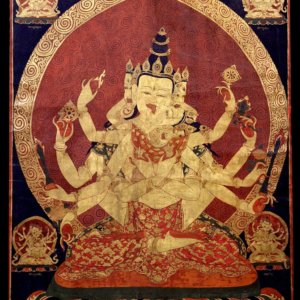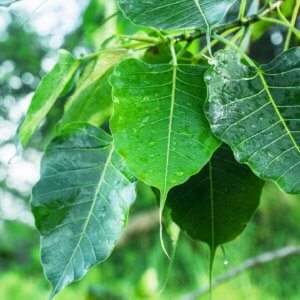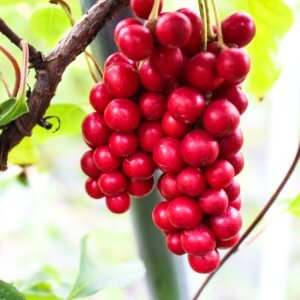 1
1

Arkaim and the texts of Rgveda about his builders
 25. 04. 2024
25. 04. 2024



 27. 12. 2019
27. 12. 2019

Tibet - just one word and we feel the resonance of mystery, wisdom, faith and centuries-old tradition of meditation. Buddhism, which was adopted as the state religion in Tibet in the 7th century, had an absolutely fundamental influence on the development of medicine. Tibetan herbalism has its origins in the local folk tradition, which dates back to the 3rd millennium BC Elements of traditional Chinese and Indian (Ayurvedic) medicine were added later. Ayurveda had the greatest influence on Tibetan medicine. Indian medicine came to Tibet in 254 with the visit of two Indian doctors. Over the following centuries, several Indian physicians in Tibet renewed and expanded this knowledge. Yuthog Yonten Gonpo is considered the father of Tibetan medicine. He became a physician at the royal court and founded the first medical school. Yuthog became the first follower of the four medical tantras that began to serve as the basis of Tibetan medical practice. He explained and clarified a number of medical books and supplemented his own findings. He thus became the real author of traditional Tibetan texts. Due to the large number of these texts, he was considered a reincarnation of the "medical Buddha."

Tibetan Buddhist medicine is a very extensive and complex diagnostic system with various forms of therapy for the body, speech and mind. According to her, there are four elements in the body. Wind (blood) - controls all movement of the body, its life force and energy. It affects the nervous system, heart, lungs, colon, bones and joints.
Fire (bile) - corresponds to metabolism and provides heat in the body. It is active mainly in the small intestine, liver, gallbladder and digestive system.
Earth and water (waste products) - corresponds to the material body and is dominant in the chest, as well as in the nose, tongue, lungs and brain, muscles, fat, stomach, bladder and reproductive fluids.
Traditional Tibetan medicine is a very complex process of drug development. Unfortunately, many herbal remedies have disappeared over a long period of time. This was due to the inaccurate oral transmission of experience and to the tumultuous historical development that Tibet has undergone over the millennia. In addition, the list of herbs used in Tibetan medicine reaches the number of thousands of species. Most come from plants and herbs. Other active substances are of animal and mineral origin. Tibetan medicine has traditionally used powder and tea blends. Their preparation is extremely complex and sophisticated. It is always necessary not only to find the cause of the ailment and to diagnose it correctly, but also to mix the ratio of active ingredients and herbs exactly.
Medicinal mixtures contain at least 8 substances, but usually the number is up to 25 ingredients. The amount of each component affects the effectiveness of other substances and therefore it is necessary to dose them exactly. Another important step is the precise mixing of individual medicinal substances and their crushing. Mixing was therefore done by hand for a long time and very lengthy. Even in the current machine production of drugs, it is necessary to maintain certain specific procedures in order to maintain the quality and effectiveness of drugs. For example, Tibetan medicine pills must not contain air, otherwise bacteria would multiply in the drugs, which would degrade them.
Medicinal herbs according to traditional Tibetan medicine can have six flavors: salty, sour, bitter, sweet, sharp and astringent. They can also have eight properties: heavy, fine, cool, soft, smooth, coarse and sharp. Finally, they can have up to seventeen effects. In general, Tibetan medicine prefers to use spicy - sharp, aromatic and warm herbs. This is probably related to the cold climate at high altitudes. Warm and aromatic herbs have the effect of balancing the environment. According to Ayurvedic medicine, spicy and spicy herbs serve to support digestion, which is the basis of good health.
Traditional Tibetan tea blends also contain a rich blend of herbs and active ingredients. Dozens of ingredients in one medicinal tea is a completely normal number.
From a wide range of Tibetan teas, we can name at least a few teas available here, such as Bodhi, Lama, Sherpa, Bhutan, Nepal and Tibetan.
Bodhi tea is intended mainly for calming and contemplation, soothes the mind and emotional strain. It consists of herbs such as the Asian umbilical cord, the nut lotus, the lemon fragrance, the cinnamon tamata, the embilica and the cardamom.

Lama tea is composed of traditional Himalayan herbs such as cardamom, lemon fragrance, ginger, glycyrrhiza glabra, Ceylon cinnamon, round butterbur and Asian umbilical cord. It promotes concentration and is recommended for morning stimulation of body and mind.
Sherpa tea or mountain power strengthens and regenerates the body. It stimulates fatigue, warms the body thanks to the composition of cardamom, asparagus racemosus, sorghum, tamala cinnamon, boerhavie diffusa, glycyrrhia glabra, black pepper and ginger.
Bhutan tea is primarily a relaxing tea. It supports the overall regeneration of the organism and brings above all a feeling of relaxation and rest. Its composition is a lotus lotus, cinnamon tamala, boerhavia diffusa, lemon scent.
Tibetan tea is literally an elixir of harmony. A traditional tea blend of Himalayan herbs for the harmonious balance of the three life energies that brings our bodily functions into balance and harmony. The three vital energies of the human body - lung, tripa and beken - control our bodily functions. Lung is a psychosomatic condition, breathing, blood circulation and nervous system. The trip is then digestion, metabolism, sensory perception, body temperature and skin appearance. Beken is a body structure, a joint apparatus, muscles, fluids and an immune system. The composition of the tea is white vine, Asian pennywort, medical embilica, cinnamon tamala, walnut lotus, glycyrrhiza glabra, currant mint.
Cardamom - Contains terpenes, carboxylic acids and vitamins. It uses rhizome, fruits and seeds. The ground spice is called cardamom and is considered a very important spice. The seeds promote digestion and stimulate the organism, the rhizome drives away fatigue and fever.
Medical Embilica - A medium-sized tree whose fruits contain a high percentage of vitamin C and amino acids. The spectrum of its effects is almost unbelievable - it restores tissues and acts as an aphrodisiac, rejuvenates, increases appetite, strengthens tissues, stops bleeding and increases the number of red blood cells, nourishes bones, supports hair growth. It has a beneficial effect on intestinal function, further lowers blood sugar levels and improves memory. It is a very strong antioxidant.
Boerhavia diffusa - in Ayurvedic medicine it is valued mainly for its ability to regenerate the liver. It also cleanses the lungs and reduces cough and asthma, it also acts as an aphrodisiac. It detoxifies the skin, is very effective in the fight against kidney stones, improves digestion and the body's immunity.
Lemon fragrance (also known as lemon grass) - forms massive clumps reaching a height of up to 150 cm. The herb contains essential oils such as citral, nerol, limonene, linalool and geraniol. It also contains flavanoids, which act as antioxidants. Fragrances lower cholesterol in the blood, have a beneficial effect on febrile illnesses, facilitate digestion, cleanse the liver, kidneys and bladder.
Vitánie snodárná (also known as Indian ginseng) - it is a highly prized herb. For medical purposes, the root of a smaller shrub is used. Its effects are almost miraculous. It is used as an aphrodisiac, generally rejuvenates the body, stabilizes the mind and sexual health of men and women. It has antibacterial, anti-inflammatory and antiviral effects, it is a strong antioxidant. It slows down premature aging, malignancy, improves memory, increases the ability to concentrate and eliminates fatigue.
Sea buckthorn - a very important herb high in vitamin C. A single berry covers its daily dose. It is also rich in vitamins A, E and B vitamins. The leaves and branches of sea buckthorn also have healing effects. It is used to strengthen the immune system, in the treatment of stomach and ulcers, has antidepressant effects, cleanses the body of toxic substances. It improves blood circulation, joint mobility and has a regenerative effect on the liver and kidneys.
Ground anchor (also known as green viagra) for its effect on stimulating sexual performance. It contains a large amount of alkaloids, steroid saponins, which have the ability to increase testosterone levels in men. It then increases women's estrogen levels and thus their libido. Anchors increase muscle mass and strengthen mental and physical condition.
Galgin - used against flatulence, against diarrhea, facilitates digestion, helps with heart pain. It is also used in toothache and has been seriously investigated as a supportive agent in the treatment of cancer.
Chinese Schizandra - a long creeper with red, juicy fruits that resemble a cylindrical bunch of currants. It grows in China, Russia, Korea and also in Japan. It is used as a sedative and tonic in Tibetan medicine. It is referred to as the "five flavors" plant. Its effects are mainly to increase activity and eliminate fatigue. It is used to treat cardiovascular disease because it strengthens the heart muscle. It eliminates inflammatory diseases of the liver, has a positive effect on the central nervous system and has a stimulating effect on the brain. It is used for bronchitis, cough and asthma.

Holy Stonecrop - a religiously revered and extraordinary herb in Tibet. The active ingredients include root, stem and flowers, which are added to tea. The scale contains mainly rhodioloside, organic substances and minerals. It serves primarily to restore mental and physical strength and its stimulating effects even exceed the effects of ginseng. It is also used to intoxicate the body. It generally regenerates, stimulates, improves the immune system and sexual activity. It is used to treat milder forms of diabetes and Parkinson's disease. Beneficial effects have been reported in some lung forms of cancer. It improves memory and sleep, it is also used in the treatment of periodontitis.
You will need special meditations seat cushion.